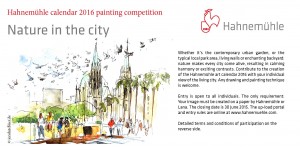Proud to share my articles in the last issue of the magazine The Art Of Watercolor.
THE FIRST INTERNATIONAL EXHIBITION “MASTERS OF WATERCOLOR”, ST.PETERSBURG
The very first event of 2015 took place in cold St.Petersburg, the cultural capital of Russia. It has showcased 92 International artists from 26 countries who exhibited about 400 works.
Exactly 1 year ago four leading watercolor artists from St.Petersburg gathered together, united by the idea of putting watercolor in Russia in spotlight. The coordinated role in organizing the event took young couple that run a studio “Prostranstvo Perspektiva” and had already an experience of arranging workshops with invited artists.
The venue of the Artists` Assosiation
The concept of the show was to make it truly International. We decided to name it TOP 200, means to invite 200 top watercolor artists from the world for participation. After a few brainstorms we found out that the time was too short for fund rising. It was quite risky to start the project if we wanted it happen in 2014/2015. Also there were difficulties like Russian customs regulations. So we decided to make a smaller exhibition in the beginning of 2015 and The TOP 200 - in 2017.
Alvaro Castagnet. La Havana, Cuba, 35x55 cm. 2014
We found an Organizing Committee (E. Bazanova, K. Sterkhov, K. Kuzema, S. Temerev and studio Perspektiva) that also was selecting the artists from Russia, Ukrain, Belorussia and Moldova. I was in charge of International selection. Although I had a short list of artists I had a serious problem to get paintings through the customs. Also the time was very short. I took a decision to invite art connoseurs to share their collections with a wider audience. That was the major part of the International section. Some artists, mainly from US agreed to participate with giclees to introduce themselves to Russian art lovers. I thought that I also had to introduce the today Asian watercolor that was absolutely unknown in Russia. I contacted some watercolorists from China, Taiwan, Thailand, Malaysia, Singapore and India.
The Organizing Committee
The venue was chosen from the very beginning. We considered that the Grand Exhibition Hall of the Artists` Union would be the most spectacular. It is situated in the very heart of the city in a beautiful historical building that would make the whole show so special! The Russian participants shared the rent of the venue. The organizers invested into the catalogue, frames and other costs. It was a risky but very inspiring experience to make a big show without a sponsor.
Samir Mondal. Banalata. 75x55 cm. 2014
Another idea realized in our project was a contest for young artists studying or graduated from Art schools. It was in 3 categories – for children, for art students and for young artists before 35 years old. Also we announced a contest for art critic on watercolor theme. The exhibition of the finalists of the young artists contest was expressing. Such an inspiring push for their creative life!
Round table discussions on art materials.
Almost every day of the show we had master classes and round table discussions on Art materials, teaching watercolor and art market problems. We had many guest from all over Russia and neibough countries. The exhibition visitors could see the impressing demonstration by Eugen Kisnisean (Moldova), Igor Sava (Italy), Ilya Ibryaev, Sergey Kurbatov and organizers Elena Bazanova, Konstantin Sterkhov, Konstantin Kuzema and Sergey Temerev, who besides their single demos made a joint demo of 2 meter painting with a St. Petersburg scenery.
Even for that respected exhibition hall the show was a success. We were told that almost 8000 people visited the exhibition within the first 9 days. We were asked to prolong for another 2 weeks free of charge for the venue (that never happened before). I believe it was a new breakthrough for watercolor in Russia that shows a growing interest for our beloved medium.
Big Picture for 4 artists - 2m70 cm
List of participated artists:
Russian part: Oktai Alirzayev, Tatiana Anisimova, Evgeny Antonenkov, Elena Bazanova, Alexander Vyazmenskiy, Igor Glazov, Galina Gomzina, Dmitriy Dergounov, Eugeny Doubitskiy, Nina Diakova, Anatoliy Zasidkevitch, Ekaterina Ziuzina, Ilya Ibryaev, Anna Ivanova, Lattif Kazbekov, Alexander Karpan, Anna Kozhina, Konstantin Kuzema, Ekaterina Kuznetsova, Maria Kourbatova, Sergey Kourbatov, Alina Lesova, Anna Mikhailova, Igor Mosiychuck, Nadezhda Nickolayeva, Viktor Novotny, Sabit Nourimov, Oleg Pomerantsev, Vladimir Proshkin, KonstantinSterkhov, Vladimir Roumyantsev, Neena Ryzhykova, Alexander Saikov, Andrey Sklyarenko, Aleksey Talashiuk, Sergey Temerev, Anna Tereshenkova, Olga Shakleina, Olga Shayunova, Oleg Shirinkin, Alexander Votsmoush, Oleg Yakhnin
Joseph Zbukvic. Coffee Time. 35x55 cm 2013
International part: Linda Baker, Janine Gallizia, Ginzburg Maria, Eugen Gorean, Jayson Yeoh, Joe Dowden F., Zhou Tianya, Jozeph Zbukvic, Stanislaw Zoladz, Liu Yi, Amit Kapoor, Alvaro Castagnet, LOK Kerk Hwang, Direk Kingnok, Eugen Chisnicean, Kathleen Conover, Marja Koskiniemi, La Fe, Piet Lap, EGLE LIPEIKAITE, Laurin McCracken, Angus McEvan, Milind Mulick, Atanas Matsoureff, Samir Mondal, Yuko Nagayama, Barbara Nechis, Ted Nuttal, Valentina Nasi, Tansu Ozmen, Ong Kim Seng, David Poxon, George Politis, Victoria Prischedko, Prafull Sawant, Igor Sava, John Salminen, Xavier Swolfs, Nicholas Simmons, Tan Suz Chiang, Keiko Tanabe, Alexander Talalim, David Taylor, Robert Wade, Maikki Haappala, Chien Chung-Wei, Thomas Schaller, John Yardley
http://www.artofwatercolour.com/






























































-1.jpg)
-2.jpg)























